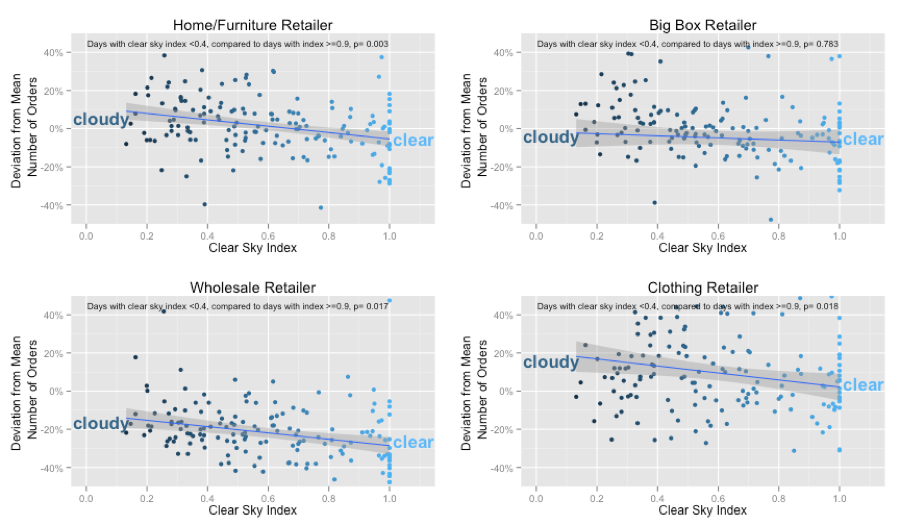One particularly bleak January day, while staring at my computer screen for what seemed the 17th hour on an incredibly tedious, time-consuming freelance project, I did what many would do — I turned to Zappos.
Two days later, more than $800 in Frye boots landed at my doorstep. It was then that I realized that I had a little problem: shopping online when I was bored and frustrated, especially when going outside did not seem that appealing.
I may not be alone. RichRelevance, a San Francisco-based firm that analyzes behavior and data for its retail clients like Wal-Mart and Target, asked the question: Does weather affect online shopping habits? And they turned to none other than our fair cloud-and-mist-covered city of Seattle to start digging around.
 Mariah Walton of the RichRelevance analytics team spearheaded the experiment. Walton has studied climate change, and she was curious about how the environment affects our shopping habits.
Mariah Walton of the RichRelevance analytics team spearheaded the experiment. Walton has studied climate change, and she was curious about how the environment affects our shopping habits.
“My original hypothesis was simple: Weather affects how and when people shop,” Walton writes on RichRelevance’s blog. “To extrapolate that even further, I’ll surmise that people habituated to rain, like Seattle natives, will abandon the digital world when it’s sunny and enjoy the great outdoors.”
To begin, Walton looked at data for four major retailers in home/furniture, wholesale, clothing and big box verticals, using the weather report from Sea-Tac and long-term temperature norms from the National Climatic Data Center, only looking at Saturday and Sunday data (when folks aren’t distracted by work), and subtracting daily sales from a moving average.
Her findings? Walton found that cold or rainy days generally resulted in more online sales in home/furniture and wholesale. The trend “was present but less pronounced,” in clothing and big box sales. “In summary, Seattleites prefer to shop online when it’s rainy, and either shop less or shop in-store when it’s hot out,” Walton reported.
And while that may be obvious to those of us who live here, Walton looked at another data set since our warm and sunny days tend to cluster around a certain time of year. So she looked at cloud cover instead.
This time, Walton found that the difference is a 10 to 12 percent drop in online orders for clothing, home/furniture and wholesale when it’s sunny outside. Cloud cover made no difference in big box sales.
“But is this a bad thing for the retailer? Possibly not,” she writes. “Many users may be shopping at the actual physical stores on these sunny days, thereby not detracting from total sales. Who wouldn’t rather try on a dress on-site when it’s a nice day out?”
“My hypothesis was correct,” she continues. “Weather influences sales to a small degree, particularly at retailers of certain verticals, but it’s by a small enough margin that there’s room for debate.”
All I can say is, thank goodness you can return anything to Zappos for free.
Photo by Sea Turtle, via Flickr.




